






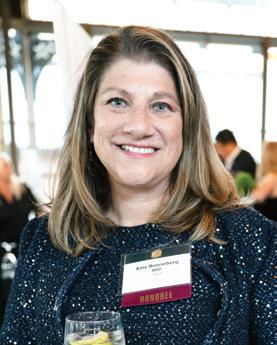

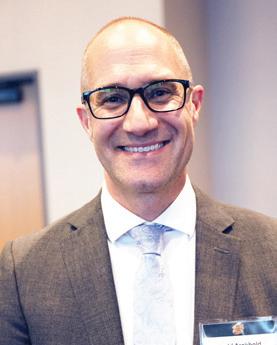
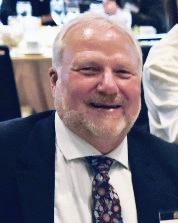
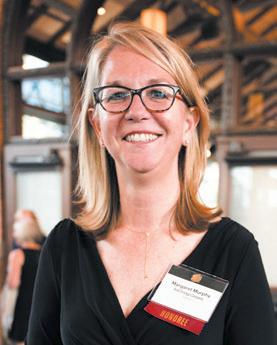



By Al Brown Assignment Editor
n an inspiring celebration of leadership and community impact, Tracey Williams-Dillard, CEO and publisher of the Minnesota Spokes-
man-Recorder (MSR), was recognized among ten esteemed recipients of the Minneapolis St.Paul Business Journal’s Most Admired CEOs award on September 25. This honor acknowledges influential leaders who drive positive change and
shape the future of Minnesota through their professional and community endeavors.
Tracey Williams-Dillard stands out not only for her leadership but also for her rich heritage as a third-generation publisher of the state’s oldest Black business
and one of the nation’s oldest Black-owned newspapers. This year also marks a significant milestone for the Minnesota Spokesman-Recorder as it celebrates its 90th anniversary of continuous operations—a testament to the enduring legacy of
journalism that prioritizes equity, representation, and community engagement.
Reflecting on what leadership means to her, WilliamsDillard articulated a philosophy that combines courage,
Black women are missing four times longer than white women
By Al Brown Assignment Editor
n recent years, the issue of missing women, particularly Black and Indigenous women, has gained national attention. This concern is particularly acute in Minnesota, where stark disparities in missing persons cases reflect systemic inequities in law enforcement response and societal awareness. The ongoing case of Joanne Rulford, who vanished from her North Minneapolis home in 1988, serves as a tragic reminder of the long-standing gaps in the treatment of missing persons cases based on race.

A staggering disparity
The FBI’s National Crime Information Center Missing Person and Unidentified Person database indicates that last
year, there were 89,020 Black women and girls of all ages recorded as missing persons. At the end of 2021, there were 14,323 active missing cases
involving Black females out of the 93,718 open files.
In contrast, the number of missing white women does not match this alarming sta-

By Binta Kanteh Contributing Writer
oulas, doctors, nurses, and researchers recently descended on the campus of the Amherst H. Wilder Foundation to learn from each other how they can continue to identify the roots and extinguish the adverse im
pacts of institutional racism on Black and Brown women working in the birthing industry.
The summit, which cel
ebrated its fifth year Sept.1920, was hosted by the African American Babies Coalition and Projects (AABC), an initiative within the Wilder Foundation’s community impact division.
One of the highlights of this year’s summit was the participation of Dr. Camara Phyllis Jones, an epidemiologist and family physician who is also a renowned leader in the theory of racism as a public health crisis. Dr. Jones held this notion long before the declaration took hold across the country following the murder of George Floyd.

tistic. The national narrative also suggests that Indigenous and Latina women experience similar crises, with their cases often classified under broader categories, rendering precise quantification difficult.
Underreported and overlooked
The frustrations voiced by families of missing women of color often echo the same theme: a lack of urgency and resources directed toward investigating their disappearances. As seen in the case of Joanne Rulford, law enforcement not only fails to keep adequate records but often allows cases to stagnate or fall into obscurity.
In Rulford’s case, the lack
By Stacy M. Brown
resident Joe Biden and Vice President Kamala Harris announced Thursday sweeping new measures to combat gun violence in America, marking a significant escalation in the administration’s ongoing efforts to reduce firearm-related deaths. Central to this initiative is a new executive order that directs federal agencies to address the rising threats posed by machine gun conversion devices and 3D-printed firearms and to improve the effectiveness of school-based
active shooter drills.
The White House said the steps build on the administration’s already extensive record in gun violence prevention. Since taking office, the BidenHarris administration said it has worked to address the alarming spike in violent crime left by the previous administration.
The American Rescue Plan allocated over $15 billion to law enforcement and public safety strategies, focusing on community violence interventions. In June 2022, Biden signed the Bipartisan Safer Commu-
nities Act, which the White House called the most significant gun violence prevention law passed in nearly three decades. A year later, the administration established the White House Office of Gun Violence Prevention, a ground-breaking program under Vice President Harris’ direction.
The administration said this decisive leadership has had tangible results: In 2023, the U.S. witnessed the sharpest decline in homicide rates in recent history, a trend that has only accelerated into 2024. From January to June, homicides
■ See GUN VIOLENCE on page 5
“I came to this summit because this is a topic I care deeply about—I work in this space, and because Dr. Camara Jones was the keynote speaker,” said Abiola Abu-Bakr, a Nigerian-American doula and healthcare innovation consultant, on what moved her to attend the summit. “She has been a public health idol of mine and has set the foundations for the work I do today and the way I view the role of racism in health outcomes, not just how I view it but how I talk about it through the work that I do,”
Abu-Bakr also sent a message to those who couldn’t attend the summit: “Minnesota, specifically the Twin Cities, has a dynamic birth worker community. It feels so good to know that we have a dynamic conference here in the Twin Cities, and it brings together so many birth workers, people
■ See BIRTHING on page 5


By Shandra Ward, Interior Designer
Whether the warm weather extends deep into the fall or you are formulating ideas for next spring and summer, creating an outdoor dining room or dining al fresco can be a delightful way to enjoy meals while soaking up the beauty of nature. You can transform your backyard or patio into a charming retreat with the proper setup.
Consider adding a sturdy table, comfortable chairs, and perhaps a pergola for shade.
To complete the inviting atmosphere, add soft lighting and decorative touches like candles or string lights to enhance the ambiance as the sun sets. Below are the keys to creating the perfect outdoor dining experience.
1. Choose the location: Select a suitable spot in your outdoor area for the dining space.
2. Consider factors like proximity to the kitchen, shade availability, privacy, and a pleasant view.
3. Define the space: Use elements like rugs, potted plants, or outdoor furniture to delineate the dining area from the
rest of the outdoor space. This helps create a sense of intimacy and purpose.
4. Select outdoor furniture: Invest in weather-resistant outdoor furniture that suits your style and space. Options include dining sets with tables and chairs, benches, or cozy outdoor sofas for a relaxed vibe.
5. Add comfort: Enhance the comfort of your outdoor dining area with cushions, throw pillows, and outdoor rugs. Opt for materials that can withstand exposure to the elements.
6. Provide shade: Install a canopy, umbrella, pergola, or shade sail to protect diners from the sun during hot days. This provides comfort and adds a stylish touch to the space.
7. Lighting: Incorporate ambient lighting to extend the usability of your outdoor dining area into the evening. Options include string lights, lanterns, solar-powered pathway lights, or even built-in fixtures if you have a pergola or overhead structure.

8. Accessorize: Personalize your outdoor dining room with decorative elements like table centerpieces, candles, or outdoor artwork. Consider incorporating items that reflect your personality and style.
9. Create a greenery: Surround the dining area with lush greenery by adding potted plants, hanging baskets, or a vertical garden. This adds beauty and enhances the sense of being immersed in nature.
10. Entertainment: Install outdoor speakers or create a designated space for a portable speaker so guests can enjoy music while dining. Additionally, consider adding outdoor games or activities to enhance the dining experience.
11. Weather consider-

ations: Prepare for unexpected weather changes by having solutions in place, such as outdoor heaters for chilly evenings or portable fans for hot days. Storage solutions like outdoor chests or bins can help protect cushions and accessories when not in use.
12. Practical considerations: Ensure your outdoor dining area has essentials like a trash bin, serving cart or table, and possibly a beverage cooler or ice bucket to keep drinks cold.
are some of
for
13. Maintenance: Regularly clean and maintain your outdoor dining area to ensure it remains inviting and functional. This includes wiping down furniture, cleaning cushions, and periodically refreshing plants.
With these steps, you can create a charming outdoor din-
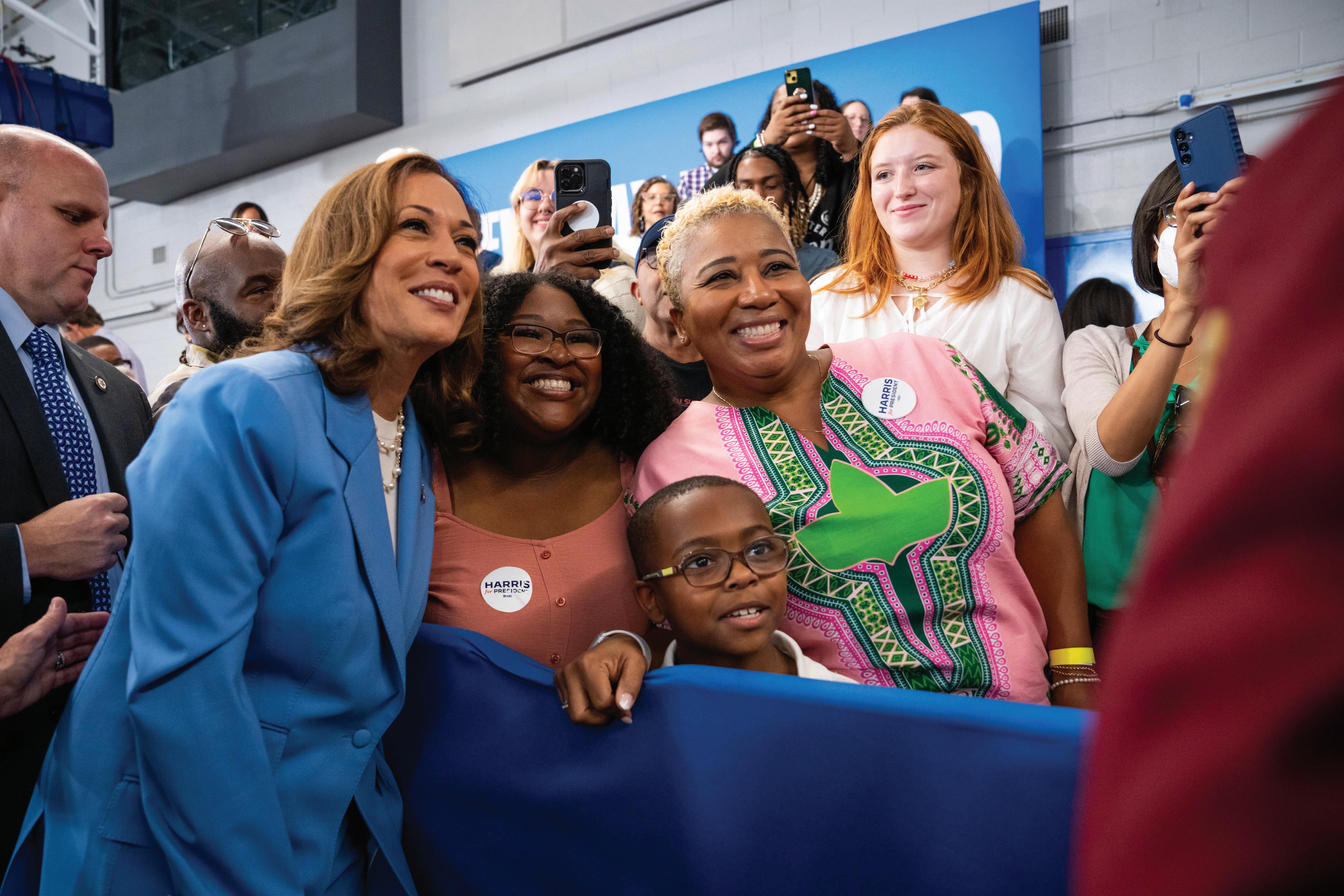

You want to build and share your wealth. We have tools to help you do both. Together, we’re unstoppable.

Sponsored by

By Christopher P. Holstege
What are nitazenes?
Nitazenes are a class of syn-
thetic opioids that contains more than 20 unique compounds, including isotonitazene, which was first identified in 2019 and is known on the streets as ISO. It also includes protonitazene, metonitazene and etonitazene.
Nitazenes are psychoactive substances, or “designer drugs,” that aren’t controlled by any laws or conventions but pose significant health risks to the public. These substances have recently surfaced as illegal street drugs.
Don’t let yourself be misled. Understand issues with help from experts
Researchers have relatively little information on how the human body reacts to nitazenes because the drugs have never gone through clinical trials. But lab tests show certain nitazenes could be hundreds to thousands of times more potent than morphine and 10 to 40 times stronger than fentanyl.
The U.S. Drug Enforcement Agency has classified many for-
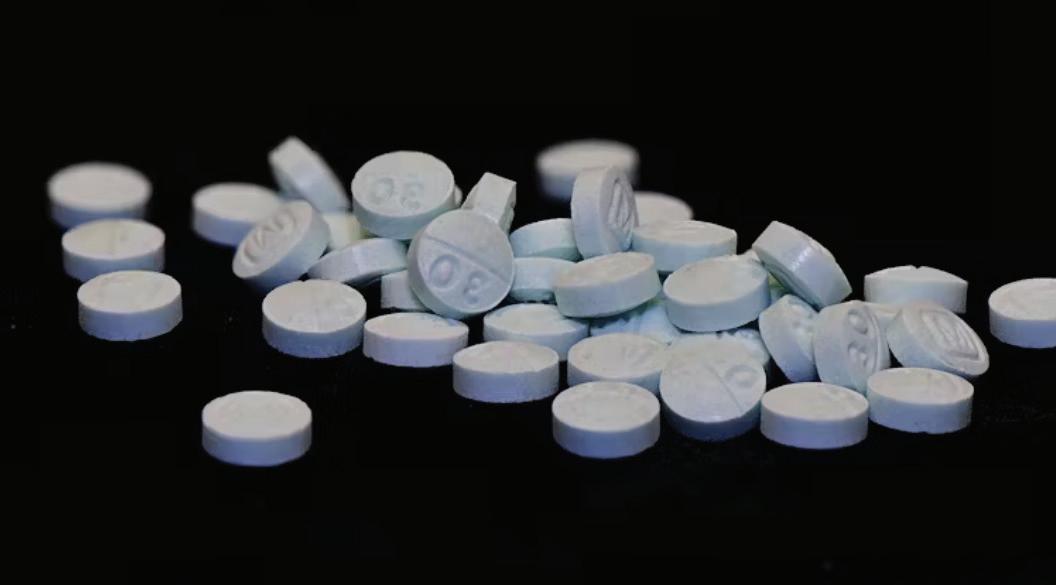
mulations of nitazenes as Schedule 1 drugs under the Controlled Substances Act, meaning they have no medical use and have a high risk of abuse.
When were nitazenes first developed?
Nitazenes were initially developed in the 1950s by the pharmaceutical research laboratories of the Swiss chemical company CIBA Aktiengesellschaft. It synthesized numerous substances in the drug class to be used as painkillers. However, nitazenes were never approved by the U.S. Food and Drug Administration for medical use in humans. They were nearly forgotten outside of specialized research circles until they reemerged as street drugs in 2019. As law enforcement has cracked
down on other drugs such as fentanyl, illegal labs have used historical pharmacology research to formulate analogs of nitazenes as street drugs.
Since 2019, at least six formulas have come from the original patent, but others, like the one detected in Boulder, are brand new. Specialized lab testing is required to identify nitazenes in toxicology samples, and fentanyl test strips can’t detect nitazene analogs.
But since first being detected, nitazenes have been blamed for 200 drug-related overdose deaths in Europe and the United States. Although nitazenes are now identified as illegal street drugs in numerous countries, many medical providers aren’t even aware they exist.
What types of nitazenes are showing up on the streets?
Nitazene first appeared in 2019 in the Midwest as a white powdery substance similar to cocaine. It later appeared on the streets of Washington, D.C., as yellow, brown, and
white powders. Since 2022, the DEA has found other types of nitazenes in both powder and blue tablet forms.
Nitazenes are also mixed with other street drugs , such as heroin and fentanyl, and with fake oxycodone pills without users knowing it.
The Justice Department has indicted several companies in China, alleging that they ship the raw chemicals to make nitazenes to Mexico and the U.S., where they get mixed by cartels and traffickers, then distributed on the streets.
What are signs of a nitazene overdose?
The toxic effects of nitazene resemble those associated with other classic opioids, such as morphine and fentanyl, and include small pupils and slowing of the respiratory and central nervous systems, which can lead to death.
Because of the potency of the nitazenes, symptoms

can develop rapidly after someone is exposed, killing them before they can get medical care.
Lab tests show certain nitazenes could be hundreds to thousands of times more potent than morphine and 10 to 40 times stronger than fentanyl.
Does naloxone counteract the effects of overdose?
Naloxone, commonly known as Narcan, is reportedly effective in reversing overdoses due to nitazene, but larger and multiple doses might be required.
Christopher P. Holstege is a professor of emergency medicine and pediatrics at the University of Virginia. This story is republished with permission from The Conversation.
You don’t have to struggle with addiction and mental health challenges alone. Help is here! For treatment and other supportive resources in Hennepin County, contact the Addiction and Recovery Services Unit at 612-879-3671 or visit the Minnesota Department of Human Services at bit.ly/HennepinGetHelp.

Continued from page 1
vision, and resilience: “To me, leadership means having the courage to create a vision, the determination to execute it, and the resilience to allow trial and error as part of growth. True leadership also requires assembling the right team and empowering them to align with that vision.” Her insights resonate deeply, particularly in an era where adaptive leadership is essential for success in the ever-evolving media landscape.
The award ceremony held at the Minneapolis Renaissance Hotel was a gathering of influential leaders featuring an impressive array of honorees, including Todd Archbold of PrairieCare, Amy Ronneberg
Continued from page 1
from hospital systems, and academics.
“It’s a range of people,” she added. “You just have to care about the topic to be involved. It’s not something that’s going to go over your head. If anything, you can build a community and walk away with opportunities and connections.”
The evening before the summit, Ruth Richardson, CEO of Planned Parenthood North Central States, hosted a fireside chat with Dr. Jones at the Vandalia Street location of the St. Paul Health Center.
AABC’s founder and director, Sameerah Bilal-Roby, commenced the informal and inti-
Continued from page 1
of existing records due to a bureaucratic cutoff after 1990 obstructs any potential for re-investigation. This underscores a broader issue in policing practices, where cases involving women of color receive diminished attention.
The possible narrative of law enforcement apathy has implications beyond individual cases. Research indicates that women of color—particularly Black and Indigenous women—are more likely to go missing for extended periods compared to their white counterparts. A study from the Urban Indian Health Institute revealed that Indigenous women are at a significantly higher risk of going missing or being
Continued from page 1
fell another 17%, while mass shootings declined by 20%, according to the Gun Violence Archive.
As the administration celebrates the first anniversary of the Office of Gun Violence Prevention, Biden and Harris, who is the Democratic presidential nominee, said they are once again raising the bar with additional actions designed to save lives.
Combating the latest firearms threats
A central focus of the new executive order is the fight against emerging firearms technologies. Two specific threats are highlighted: machine gun conversion devices and 3D-printed, unserialized firearms—both of which are increasingly found at crime
of NMDP, Brian Ryks of the Metropolitan Airports Commission, Tim Baylor of JADT Cos., Simone Xavier of Sigma Enterprises, Ken Smith from District Energy St. Paul, Patricia Chinander of Love From USA Group Inc., Margaret Murphy of Bold Orange Co., and David Saber of Park Financial Group Inc. Each leader is distinguished by their commitment to excellence in their respective fields, coupled with a dedication to community service and improvement.
Since the awards were launched in 2016, the “Minneapolis-St. Paul Business Journal” has aimed to recognize chief executives who significantly impact the state through their professional accomplishments and their engagement in local communities. This year’s honorees embody this mission, demon-
mate gathering by posing an open-ended question about the difference between rhetoric and truth.
“Minnesota, specifically the Twin Cities, has a dynamic birth worker community.”
Healing, self-compassion, and safe spaces for Black youth and Black men were topics brought up within the overarching theme of naming what Black people need at this time. Richardson directed the group
murdered, with the majority of cases remaining unsolved.
Frustration and silence
Several Minnesota Spokesman-Recorder (MSR) attempts to engage the Minneapolis Police Department (MPD) about Rulford’s case have yet to yield results. Calls to the Fourth Precinct went unanswered.
A brief conversation with an MPD representative revealed that records for cases as old as Rulford’s may no longer exist. This lack of historical context hinders the families seeking answers and the broader quest for justice.
Upon a call to the First Precinct, we were told that the MPD Records Department would be the best place to learn anything about a case dating back to 1988. Even then, the spokesperson was not confident that information
scenes across the country. Machine gun conversion devices, which can turn a semi-automatic firearm into an illegal automatic weapon, have surged by 570% between 2017 and 2021, according to the Bureau of Alcohol, Tobacco, Firearms and Explosives (ATF). These devices, often 3D-printed for less than a dollar, can fire up to 20 bullets in a single second, posing an unprecedented threat. Unserialized firearms, commonly known as “ghost guns,” also present an evolving danger. Produced through 3D printing and undetectable by standard security measures, these firearms are often used for gun trafficking and other illegal activities. Officials noted that law enforcement cannot trace them, making criminal investigations harder and communities less safe.
Biden and Harris announced they are forming an
“As I look across the room, I see current partners in this quest for continuous growth and positive change.”
strating how effective leadership can inspire change and uplift others.
With Williams-Dillard at the helm of the MSR, the publication has continually demonstrated a commitment to empowering voices and narratives that often go unheard. Under her stewardship, the newspaper has not only survived the tumultuous waters of the media industry but has also thrived, adapting to the digital age while maintaining its mission to serve the Black community in Minnesota.
back to politics by reminding attendees to be mindful of connecting research, practice, and policy and to think about how we can collectively better measure our efforts to tackle structural racism.
On the summit’s first day, nearly every seat in the conference auditorium inside Wilder was full. The audience included attendees whose understanding of how racism functions in healthcare systems and its subsequent impact on maternal health of Black and brown people was in some form influenced by the work of Dr. Jones.
Dr. Jones’s keynote featured two of four notable allegories on race and racism. Jones’s allegories illustrate how racism operates through the story. The allegory of “The
could be found.
While efforts to characterize missing persons cases through law enforcement statistics often paint a simplistic picture, they fail to capture the embedded issues of race and gender. The pervasive narrative is that cases involving women of color often languish in the face of indifference, allowing perpetrators to evade justice.
An urgent call for change
The urgency around finding solutions to this crisis cannot be overstated. Advocates stress the need for law enforcement to prioritize missing persons cases involving women of color, implement better record-keeping practices, and invest in community outreach programs to enhance awareness and resources for vulnerable populations. In addition, legislative mea-
Emerging Firearms Threats Task Force in response. The Task Force will evaluate the federal government’s ability to detect and intercept these weapons and will submit a report within 90 days outlining what additional resources or authorities are necessary to stop this growing threat.
Enhancing school safety
In the wake of numerous school shootings, the administration announced further steps to protect America’s students.
The executive order directs the Secretary of Education and other top officials to improve active shooter drills in schools.
While many schools have already conducted these drills, concerns about the psychological impact on students, teachers and parents have emerged.
The administration is committed to ensuring these drills are effective without causing trauma.
Over the next 110 days,
crucial for sustained progress and that true leadership involves guiding others and fostering an environment where diverse voices can contribute to a shared vision.
In her acceptance speech, Williams-Dillard emphasized the importance of collaboration and community-building, stating, “As I look across the room, I see current partners in this quest for continuous growth and positive change. I look forward to connecting, building relationships, and fostering new partnerships with many of you as we continue to expand our impact and legacy together.”
This forward-thinking mindset highlights Williams-Dillard’s belief that collective effort is
Gardner’s Tale” explains three levels of racism—institutionalized, personally mediated, and internalized. “A Restaurant Saga” encapsulates how racism is experienced by those who benefit from its structure and those who are oppressed by it—a dual reality. Dr. Jones hopes to one day publish her widely studied allegories as children’s books.
During the Community Health and Action Panel, Dr. Jaime Slaughter-Acey, epidemiologist and associate professor at the University of North Carolina Chapel Hill, discussed some of her research that uncovered threads between maternal health outcome differences as it relates to skin tone, finding that colorism factors in adverse experiences of darkskinned birthing women.
sures like the establishment of dedicated task forces for missing and murdered women of color are essential. These task
The role of Black-owned media in promoting equity and representation in journalism cannot be overstated, particularly in today’s climate of heightened awareness around social justice and equity. Williams-Dillard’s leadership is a benchmark for aspiring journalists and business leaders alike, showcasing how integrated community involvement is essential to shaping narratives that reflect an entire society.
As the MSR heads into its 90th year, the publication’s exciting legacy intertwines with Williams-Dillard’s vision for future growth—one that encompasses not only preserv
In an afternoon session, Department of Health Commissioner Brooke Cunningham, in State of Mothers, Babies, and Families, candidly shared her fears about her birthing experience as a firsttime mother years ago. As a Black woman and doctor, it was vital for her to know the call list of doctors who were scheduled to attend to her birth. In other words, she needed to identify who she knew would take good care of her. The underlying fear behind Cunningham’s story resonated with the crowd.
On Sept. 20, in Science, Health, and Community, Treatment Counselor Elder Sharyl WhiteHawk laid bare for attendees how maternal health care in hospital systems will continue to fail Black- and
petency and the risks facing marginalized communities is critical for improving response rates and effectiveness.
“Despite making up only 15% of the female population, African American women and girls accounted for nearly 34.6% of missing women in 2021.”
forces can facilitate collaboration between law enforcement, community organizations, and advocacy groups, ensuring that cases like those of Joanne Rulford do not fade into obscurity. Moreover, creating educational programs for communities on safety and prevention can empower women to protect themselves and advocate for their rights. Enhancing training for law enforcement officers around cultural com-
federal agencies will collaborate to create guidance for schools that will make drills safer and more developmentally appropriate while also accommodating people with disabilities and language needs.
Expanding on life-saving initiatives
Beyond the executive order, the administration announced steps to promote firearm safety, improve background checks, and fund community violence interventions.
Safe gun storage and red flag laws: The Department of Education is launching a new tool for schools to promote safe gun storage, while the Department of Justice is awarding $135 million to states for implementing “red flag” laws, which temporarily remove firearms from individuals in crisis.
Community violence interventions: An additional $85
ing history but also creating pathways for the next generation of leaders and journalists. Recognitions like the Most Admired CEOs award serve as reminders that the work of leaders like Tracey WilliamsDillard is vital, not only in their immediate circles but as part of a larger movement towards inclusivity and transformation in the media landscape and beyond.
As Minnesota looks toward a culture of smart business leadership, the impact of these 10 leaders will undoubtedly inspire others to strive for excellence and to prioritize community and collaboration, ensuring that “a better tomorrow” is not just a vision but a lived reality from the top down.
Al Brown welcomes reader comments at abrown@spokesman-recorder.com.
brown-birthing people if it continues to refuse community knowledge around quality and effective care.
Elder WhiteHawk said, “Indigenous knowledge has universal truths. Our women do better when they have their sisters, mothers, and aunties with them. We have sciencebased wisdom, but because it comes from the tribes, it’s not considered reliable.”
This year’s summit had 20 programs, including sessions, panels, and presentations.
To learn more about AABC, visit https://www.wilder.org/community-impact/african-americanbabies-coalition-and-projects.
Binta Kanteh welcomes reader responses to bkanteh13@ gmail.com.
ers—must unite to address the glaring disparities in how missing persons cases are treated based on race. Only then can we hope to protect the most vulnerable members of our society and ensure that their voices are heard.
Conclusion The disparities in missing persons cases highlight deepseated racial inequities within the system. The mystery of Joanne Rulford’s disappearance represents not just a singular tragedy but a broader issue of systemic neglect affecting countless women of color.
To bring about meaningful change, all stakeholders—law enforcement, community organizations, and policymak-
million will go toward community violence intervention programs, a key part of the administration’s strategy to prevent gun violence before it happens.
Background check improvements: New model legislation will be available for states to address legal gaps that prevent juvenile records from being shared during firearm background checks, a requirement under the Bipartisan Safer Communities Act.
Gun violence data: The ATF and FBI will release updated data on gun violence trends, including details on ghost guns and firearm trafficking.
Addressing the trauma of gun violence
The toll of gun violence extends beyond the immediate victims, affecting entire communities.
This fall, the Substance Abuse and Mental Health Services Administration (SAMHSA) will roll out new resources
Let’s not forget the numbers are real: A U.S. News article reads, “Despite making up only 15% of the female population, African American women and girls accounted for nearly 34.6% of missing women in 2021, according to the National Crime Information Center.”
Next week, we will tell our readers about our journey of exploration into MPD’s record department in search of missing Black women.
Al Brown welcomes reader responses to abrown@spokesmanrecorder.com.
to support survivors of gun violence and their families. From best practices for trauma recovery to toolkits for educators and community leaders, the White House said these initiatives aim to help communities heal from the devastating effects of firearm violence.
Looking ahead Biden and Harris said they’ve continued to call on Congress to pass comprehensive gun safety legislation, including a ban on assault weapons, universal background checks, and the repeal of legal immunity for gun manufacturers.
“These actions are saving lives, but we cannot do it alone. Congress must step up,” Biden stated. “Every day, we delay, more lives are at risk.”
Stacy Brown is the NNPA Newswire senior national correspondent.
By Alexzia Shobe Staff Writer
Jillian Hiscock’s sports bar in Minneapolis is rewriting the playbook, and it’s not just about the games on the screens—it’s about representation, inclusivity, and elevating the traditional sports bar industry. Nestled in Minneapolis’ Seward neighborhood, A Bar of Their Own isn’t your typical neighborhood watering hole. It’s a revolutionary space that centers women’s sports and fosters community for all fans, regardless of gender.
A Bar of Their Own is the brainchild born from a simple but frustrating experience. Hiscock, a lifelong women’s sports fan, found herself time and time again sitting in sports bars with her wife, watching men’s games dominate every screen. In contrast, significant women’s sporting events were neglected. Despite the success and grow
ing popularity of teams like the Minnesota Lynx and the U.S. Women’s National Soccer Team, women’s sports often remained an afterthought.
In April 2022, Jenny Nguyen opened The Sports Bra in Portland, Oregon, the nation’s first women’s sports bar. When Hiscock learned about this groundbreaking venue she couldn’t resist the chance to experience a space dedicated to women in sports. After flying out to visit, she met with Nguyen and left the conversation inspired to bring a similar vision to Minnesota.
Making the jump to turn her

dream into reality was scary. The idea was completely new to the Midwest, so she began reaching out to see if others shared her desire for a women’s sports bar. When she received an outpouring of community support and encouragement, Hiscock leaped despite having no experience in the bar or restaurant industry.
Hiscock’s professional background is rooted in system disruption and social advocacy. For years, she worked in “nonprofits advocating for educational access for marginalized youth and diversifying workforces in the tech sector.” She credits her former students for teaching her the importance of representation and how to diversify a space properly. Her career has centered on dismantling barriers, a skill set that seamlessly transferred into building A Bar
of Their Own.
Hiscock believes in hiring people who embody the values of inclusivity, authenticity, and creating a safe space. “This bar doesn’t need to be a space where we agree all the time, but it does need to be a place where people feel safe. That’s first and foremost.”
and companies that are often sidelined in the industry. “We asked ourselves every step of the way, is there a different voice we could prioritize that normally isn’t?”
“We have built a community of supporters who wanted a space like this.”
From employing a diverse staff to working with womenowned businesses like Wonder Woman Construction and exclusively serving beers brewed by women, non-binary, and trans folks, Hiscock ensured that her bar uplifted voices

Despite Hiscock’s clear vision and impeccable work ethic, opening Minnesota’s first women’s sports bar was challenging. While logistical hurdles like staffing and food ordering are standard for any new business, she faced a more significant challenge: clarifying what A Bar of Their Own stands for.
Hiscock said, “I kept hear-
ing, ‘It’s a women’s sports bar, so only women are invited,’ which couldn’t be further from the truth.”
The misconception was so widespread that she fielded five to seven weekly questions from well-meaning men asking if they could visit the bar. It took many intentional conversations and compassionate social media posts to clarify that Hiscock welcomed men, nonbinary folk, families, and nonqueer people to visit her bar.
“Anyone curious about, or loves, women’s sports is welcome here.”
Ultimately, the community that A Bar of Their Own has built makes it unique. It’s where women can watch sports without having the rules ‘mansplained’ to them and where men can enjoy women’s sports without feeling emasculated.
“We have built a community of supporters who wanted a space like this.”
Representation isn’t just a buzzword for Hiscock—it’s a guiding principle. Throughout her career, she witnessed how often marginalized voices were left out of meaningful conversations, and she made it a priority to ensure A Bar of Their Own fosters inclusion at every level.
“I’ve been taught by others—especially by the students I worked with—that people need to be seen as the unique individuals they are,” Hiscock says. Whether it’s asking her staff how to make the space more inclusive or consult
ing with disabled community
members to improve accessibility, she is constantly working to ensure her bar reflects its core values.
One example of this responsiveness came early on when a non-binary employee pointed out that the bar’s sign on the bathroom door offering “feminine products” could be more inclusive. The sign was quickly updated to “period products” to better reflect the experiences of non-feminine uterus-having people. “Our awareness is changing, and that’s progress. We want that to happen.”
As A Bar of Their Own approaches its first anniversary, Hiscock remains focused on continually evolving. “The goal is to keep pushing forward and putting women’s sports front and center,” she says.
Other local bars are already reaching out for advice on how to incorporate more women’s sports into their programming, a change Hiscock welcomes. “I need other places to play women’s sports and see its value, not just from a monetary standpoint but from a community perspective.”
While the journey hasn’t always been easy, Hiscock is optimistic about the future of A Bar of Their Own and its impact on Minnesota’s sports bar culture. “We’re creating a space where everyone feels comfortable, and that’s a win in my book.”
Alexzia Shobe welcomes reader responses at ashobe@ spokesman-recorder.com.







By Nadine Matthews Contributing Writer
To help sharpen your political acumen (or provide some distraction from the next wave of political chaos) over the next month leading up to the election on November 5, we’ve assembled a list of films and TV shows on the subject.
Shirley (Netflix)
This 2024 biopic charts the political career of charismatic and spirited school teacher
Shirley Chisolm, the first Black Congresswoman, and captures the excitement of her daring presidential nomination run in 1972. The film deftly highlights the importance and fragility of relationships in politics. It stars Regina King, Terence Howard, and Lance Reddick.
All The Way (Max)
Chronicles the trials, tribulations, tactics and temerity it took for 36th U.S. President Lyndon B. Johnson to pick up where slain President John F. Kennedy left off and get the Civil Rights Act passed over the protestations of dyed-inthe-wool racist senators and congressmen. “All The Way,” unlike other films chronicling LBJ’s presidency and legislative battles, highlights the pivotal role played by Black American civil rights activists such as Dr. Martin Luther King and Fannie Lou Hamer in strongly making the case for the passage of the Civil Rights and Voting Rights Acts.
It also clearly illustrates the evolution of Democratic Party membership after the enfranchisement of Black Americans. It features Anthony Mackie and Aisha Hinds.
Scandal (Tubi, Hulu)
One of the most popular nighttime dramas of the twenty-teens that continues to capture the public imagination.
“Scandal” plumbs the depths of the relationships of Washington D.C. “fixer” Olivia Pope. Anchored around her illicit relationship with the president and typical morally questionable cases, the show, despite its melodrama and spectacle, unsparingly illustrates the messy, chaotic, Machiavellian nature of American politics under the buttoned-up facade. Features Kerry Washington,


Madam Secretary (Netflix)
Though cut from similar cloth as “Scandal,” Madam Secretary’s female protagonist is a traditionally heroic figure.
A smart, sophisticated, principled and devoted Secretary of State, Elizabeth McCord is also an admirable mother, wife and friend. Many of the story arcs center around the gritty and challenging milieu of international politics. It features Patina Miller and Sandra Daley.
The Manchurian Candidate (Max)
The 2004 remake of the 1962 classic features former Sergeant Raymond Shaw of the First Gulf War, who parlays a tragic incident from the war into a bid for U.S. Vice President. The film highlights the uncomfortable reality of manipulating truth domestically and internationally for political ends. Features Denzel Washington, Kimberly Elise, Meryl Streep, and Liev Schrieber.
Emperor of Ocean Park (MGM+)
This 2024 series based on the 2002 legal thriller by Yale legal scholar Stephen L. Carter unravels the life of failed Su-
preme Court nominee Talcott Garland, a controversial, highly visible Black Republican in the vein of Clarence Thomas, who dies at the beginning of the story’s action. The show takes a rare look at the lives of the Conservative Black American political elite even as it engages the audience in a taut mystery. Co-ZExec produced by John Wells (The West Wing). Features Grantham Colemen, Forrest Whitaker, Henry Simmons, Tiffany Mack, and Paulina Lule.
Confirmation (HBO)
Dramatizes the testimony of legal Professor Anita Hill at the Senate hearings for then-SCOTUS nominee Clarence Thomas. Some say recent events have proven her to be correct in her negative assessment of the Supreme Court Justice. Features Kerry Washington and Wendell Pierce.
The West Wing (Max, Plex)
One of TV’s most iconic series centered on American politics, “The West Wing” uses sharp, skillful storytelling to chronicle the personal and professional lives of staffers in the West Wing of the White House and Washington D.C. power dynamics. It features Dule Hill and Martin Sheen.

(Max)
This satire, airing on HBO for seven seasons, highlights the hilarity that often ensues when people in high places (such as the White House) take themselves a little too seriously. Seinfeld’s Julia Louis-Dreyfus plays Selina Meyer, who becomes VP after losing her nomination for president. The show follows her and her
staff through the slings and arrows of America’s executive office. Features Sufi Bradshaw, Sam Richardson.
House of Cards (Netflix)
All The President’s Men (Prime Video)
An American classic, “All The President’s Men” stars, is directed by, and was written by Oscar nominees and winners. It dramatizes the infamous Watergate Scandal from the point of view of the men who broke it—D.C. journalists Carl Bernstein and Bob Woodward. It also features Robert Redford and Dustin Hoffman.
Wag The Dog (Prime Video)
In this dark political satire, when caught in a salacious scandal only weeks before an election, the political nominee at the center of “Wag The Dog” does not conspire with his lawyer to pay off hush money to an adult film actress. Instead, he conspires with a Hollywood producer to fabricate an entire war he alone can fix. Features Dustin Hoffman and Robert DeNiro.
Nadine Matthews welcomes reader responses to nmatthews@ spokesman-recorder.com.
One of the earliest series that helped put Netflix’s streaming platform on the map, “House of Cards” is perhaps the darkest of political dramas. Ruthless intrigue interspersed with thrills and suspense marks the series, featuring Kevin Spacey as Machiavellian Congressman Frank Underwood who, with his equally treacherous wife, wreaks havoc on the D.C. politicos for their personal ends. It’s as coldblooded as “Scandal” with less melodrama. It also features Mahershala Ali, Curtiss Cook, and Reg E. Cathay.



By Keith Boykin
“Black Vote, Black Power,” a collaboration between Keith Boykin and Word In Black, examines the issues, the candidates and what’s at stake for Black America in the 2024 presidential election.
Three Black men have dominated the news in recent days for different reasons: Eric Adams, Marcellus Williams, and Mark Robinson. Their stories don’t have much in common, but they reveal much about our country and our politics.
First, Adams, mayor of New York City, was indicted Wednesday on bribery and corruption charges. Three years ago, when I was still living in New York, I refused to vote for him. Even after he was elected, I was still not a fan but gave him four years to prove me wrong.
He did not prove me wrong.
Last year, Adams refused to condemn a white man who choked a Black man to death on a subway train. In January, he vetoed a ban on solitary confinement in city jails and killed a plan to document police stops. Just as I expected, Adams brought back the racially biased stop-and-frisk policing that was ruled unconstitutional a decade ago.
Adams is exactly who I thought he would be, and many of us tried to warn New Yorkers. But I remember talking to Black men in Harlem who supported him over a talented Black woman named Maya Wiley, in part because he’s a Black man. For all the lies about Vice President Kamala Harris—that “Kamala is a cop”— Adams actually was a cop and a former Republican. But many Black men were still willing to support him.
Second is Williams, a 55-yearold Black man from St. Louis, my hometown. The state of Missouri
executed him this week after the Supreme Court refused to stop his execution, even though the prosecutor said the case against Williams was flimsy and tainted. The NAACP appropriately called the execution a “lynching.”
A 6-3 Supreme Court decision split along party lines: the six conservatives approved his execution, while the three liberals voted to stop it. Donald Trump appointed three of the six conservatives; therefore, if Hillary Clinton had won in 2016, Williams would more than likely still be alive. Still, some people on social media tried to blame President Joe Biden and V.P. Harris for Williams’s death. That’s a damn lie. Missouri’s Republican governor, Mike Parson, and Missouri’s Republican Supreme Court approved the execution.
ple…who hate Black people.
I get why white people support Robinson, but how the hell can any self-respecting Black person be associated with a party like this? Just this week, Louisiana Republican Clay Higgins called Haitian Americans “wild,” “nasty,” “vudu”-loving, pet-eating “thugs” who should get “their a#$ out of our country.” And even then, Republican House Speaker Mike Johnson refused to condemn his racist rhetoric.
“Clay Higgins is a dear friend of mine and…a very frank and outspoken person. He’s also a very principled man,” Johnson said.
First of all, Higgins admitted years ago that he voted for Ku Klux Klan leader David Duke for governor of Louisiana, so why is he a dear friend of Johnson’s?
Too many Americans don’t pay attention to their government until it’s time for a presidential election every four years.
It was the Democratic prosecutor in St. Louis County and the Democratic appointees on the U.S. Supreme Court who tried to stop it. No legal authority gives Biden the power to intervene or pardon Williams in a state murder case. So, if you’re going to criticize Democrats, at least understand how our system of government works.
Third, Mark Robinson, North Carolina’s lieutenant governor, has been outed as a self-hating, hypocritically porn-obsessed Black Nazi who wants to bring back slavery and join the Ku Klux Klan. After all that, Trump and running mate JD Vance refuse to disavow him. This proves the point I’ve made many times that Republicans love Black peo-

Anti-immigrant agitation in a nation of immigrants
By Lawrence S. Wittner
In recent days, Donald Trump and his Republican running mate, JD Vance, have doubled down on their false and defamatory claims about legally admitted Haitian immigrants in Springfield, Ohio, thus churning up widespread fears, bomb threats, and school evacuations.
Claiming that these migrants were destroying the American “way of life,” Trump promised that, if elected, he would order massive deportations. This statement echoed his astonishing promise, made during the 2024 campaign and previously, to seize and deport between 15 and 20 million immigrants.
Nativist agitation has a long, sordid history in the United States. In the 1850s, many American Protestants rallied behind the Know Nothing movement and its political offshoot, the American Party, ventures centered primarily on opposing the influence of immigrant Catholics.
In the latter part of the 19th century, hostility toward Chinese immigrants (“the yellow peril”) and, later, Japanese immigrants led to lynchings, riots, and legislation that barred virtually all immigration from the two Asian nations.
During the early 20th century, American xenophobia focused on the alleged dangers provided by the “new immigrants” from Southern and Eastern Europe, predominantly Catholics and Jews.
Such people, it was claimed, had a higher propensity for moral depravity, feeble-mindedness, and crime and were polluting the “Nordic race.” As a result, many “old stock” Americans championed changes in immigration law to sharply reduce the number of these allegedly inferior people entering the country.
onset of the Nazi terror.
Of course, many Americans, symbolized bythe Statue ofLibertyin New York Harbor, welcomed the arrival of people from foreign lands. In line with their views, U.S. immigration law was significantly liberalized in 1965.
We should also recognize that the United States was hardly unique in undergoing surges of anti-immigrant nativism. Indeed, over the centuries, recent arrivals in many countries experienced rampant xenophobia—including “Paki-bashing” in Britain and violence against Turkish immigrants in Germany. Recently, in fact, intense opposition to immigration and immigrants provided a key factor behind British public support for Brexit and the startling rise of previously marginal, hypernationalist parties in Europe.
What has inspired this hostility to people coming from other lands?
Many individuals, it seems, feel uneasy when confronted with the unfamiliar. Thus, they sometimes find differences in skin color, religion, language or culture to be disturbing.
Although some people can―and often do―find these things a welcome addition to their lives or, at least interesting, others become uncomfortable.
Unfortunately, this unease with human differences provides a ready-made opportunity for political exploitation. As many a demagogue or unscrupulous politician has learned, fear and hatred of the “other” can effectively stir up a mob or win an election.
the United States, where groups like the Ku Klux Klan, the Silver Shirts, the Nazi Party, and the America First movement lauded a mythical “Americanism” and assailed the foreign-born.
Trump’s adoption of an antiimmigrant approach as a central theme of his MAGA movement, like his promise of building a wall between Mexico and the United States, is no accident but part of a political strategy to ride xenophobia to power.
With the advent of democratic institutions in many nations, the right has faced a difficult situation. Before the commoners gained the vote, their opportunities for effectively challenging economic and social inequality were limited. But, armed with the ballot, masses of people had the power to elect governments that would implement more equitable policies, such as sharing the wealth. This could be accomplished in various ways, including taking control of giant corporations and estates, heavily taxing vast fortunes, raising workers’ pay, reducing the workday and lengthening vacations, building inexpensive housing, and establishing free education and health care.
Worst of all, from the standpoint of the right, such leveling measures, advanced by a burgeoning left, had significant popular appeal. Consequently, the right has gravitated toward this divide-and-conquer strategy that sometimes worked.
Will it work again in the 2024 U.S. presidential and congressional elections? With the poll numbers so close, it’s hard to say.
submissions@spokesman-recorder.com
submissions@spokesman-recorder.com
submissions@spokesman-recorder.com.
Second, Johnson claimed that Higgins deleted the post after “he prayed about it.” It turns out that the “very principled man” only did so after the Congressional Black Caucus brought up a resolution to censure him.
“But, you know, we move forward,” said Johnson. “We believe in redemption around here.”
Redemption? No, sir. There can be no redemption without contrition. So, tell me: When will Trump, Vance, Higgins, and Elon Musk apologize to the Haitian Americans whose lives they’ve endangered in the most overtly racist major-party presidential campaign in 60 years?
These people are not the least bit remorseful about their bigotry unless it blows up in their faces. And just like Robinson, they all had a long history of racist, sexist, and inflammatory rhetoric before these scandals erupted.
And that’s the problem. Too many Americans don’t pay attention to their government until it’s time for a presidential election every four years. But Adams, Williams, and Robinson show what happens when we don’t.
Our ignorance makes us susceptible to the click-baiters, cynics, opportunists, hoteps, bots and opps who spread misinformation for clout and pay.
So stop listening to the cloutchasing clowns who don’t know anything about government or politics, who try to get you not to vote or to throw away your vote. Stop listening to cynics peddling unrealistic expectations of what can happen in a single term in office and then weaponize your disappointment.
We can’t win if we don’t participate, and we can’t participate effectively if we don’t know the rules.
Keith Boykin is a New York Times–bestselling author, TV and film producer, and former CNN political commentator.
Adopted in legislation during the 1920s, a new, highly discriminatory national origins quota system did, indeed, largely restrict their ability to enter the United States, leaving millions to perish in Europe after the
Although nativism has been mobilized by political parties and movements of varying political persuasions, it has appeared most frequently on the right. Fascist movements of the 1920s and 1930s focused heavily on the supposed glories of their nation and the ostensible biological inferiority of people from other lands.
This xenophobia provided a right-wing ideological component in numerous countries, including
Meanwhile, though, it’s worth noting how ironic it is that in the United States―a nation populated almost entirely by immigrants and their descendants―anti-immigrant sentiment, whipped up by Trump and Vance, has once again come to the forefront of American politics.
Dr. Lawrence Wittner, syndicated by PeaceVoice, is a professor of history emeritus at SUNY/Albany and the author of “Confronting the Bomb” (Stanford University Press).
Our protected public lands remind us that nature is for everyone
By Ben Jealous
“There are so many people in Detroit; there’s so many people in Chicago, there’s so many people in Atlanta and Washington, D.C. and Cleveland and L.A. that don’t realize that whatever is ailing them potentially could be cured by a visit to a place like this.”
Those are the words of Yosemite National Park Ranger Shelton Johnson. Johnson is a renowned advocate for diversity in our national parks. As a community engagement specialist for the park, he sees it as his duty to connect people with nature and our national parks—especially people who, in their communities, may not historically feel a connection to them.
Recently, Johnson welcomed a group of high school students from his hometown of Detroit and the same high school he attended, Cass Tech, on their first visit to Yosemite. They were on a trip organized by Detroit Outdoors and the Sierra Club. He told them:
“You own this. This is your property. Yosemite is your property and your family’s property. Yellowstone is your property and your family’s property. The Grand Canyon is your property and your family’s property.”
Ranger Johnson is right. America’s public lands belong to all of us. That goes for the more than 640 million acres of land that make up our more than 400 national parks, 560 national wildlife refuges, 154 national forests, more than 130 national monuments, and millions more publicly managed acres. Diversity in our national parks is a tradition as old as the parks
themselves. Decades before the National Park Service was created, the famed African American Buffalo Soldiers served as the first rangers for the country’s early national parks like Yosemite and Sequoia. (Ranger Johnson happens to be an expert on that topic.).
The Biden-Harris administration has advanced initiatives that recognize this. In April, a new public lands rule recalibrated the Bureau of Land Management’s mandate from a nearly exclusive focus on resource extraction to giving equal weight to conservation. The U.S. Forest Service just concluded a public comment period on a proposed plan that could protect the country’s remaining old-growth forests.
astation of fossil fuel extraction. I am convinced that witnessing the migratory paths of caribou and the ancient stone fences of the Inupiaq people would drive home for anyone the urgency of protecting our planet and conserving wildlife and wild places.
Our national monuments recognize sites of not only natural but also historical and cultural importance. Our newest national monument—designated by President Biden in August—commemorates the 1908 Springfield Race Riot, which sparked the creation of the NAACP, a national reckoning with racial violence, and the birth of the modern civil rights movement.
This week, we celebrated Na-
national parks.
Mature and old-growth trees can absorb and store carbon pollution, making them one of nature’s most powerful climate solutions. This is near and dear to my heart. The first protest I ever organized as a high schooler was an anti-clearcutting rally in Sacramento, California.
There are boundless examples of why protecting public lands is so important. I recently visited the Western Arctic in Alaska, where an effort to add so-called Special Areas would preserve millions of acres of public lands in one of the last untouched ecosystems in the United States.
It would safeguard a vital habitat for imperiled species and help protect the Arctic from the dev-
tional Public Lands Day. Let us use the opportunity to break down barriers of race, income, and geography when it comes to enjoying America’s public lands.
As Ranger Johnson told those kids from Detroit, he was so excited to see them because by simply being there, they were “changing the whole sociological dynamic right now, just being present.” He told them, “That’s why it’s powerful that you’re here. Because this is a sign of change, and this is what the future looks like. You are the future.”
Ben
of the
of practice at the
of Pennsylvania.
By Ken Foxworth
I speak to the Black experience, but I am always talking about the human condition.
Maya Angelou
During my time working with the Upward Bound program at St. Louis University in Missouri (1978-80), I witnessed firsthand how critical it is to encourage students to believe in themselves. This program gives high school students from underserved communities a taste of college life and challenges them to envision a brighter future.
One thing became unmistakably clear: Many students, especially African American youth, were not being challenged to reach their full potential. This systemic underestimation is something we need to change. We must elevate our expectations and inspire students to dream bigger and push themselves harder.
The problem with low expectations
For too long, students from underserved communities have been held back by low expectations. When educators and institutions do not challenge students, the students, in turn, do not challenge themselves. This issue disproportionately affects African American youth.
According to the National Center for Education Statistics, African American students are less likely to be placed in advanced classes even when they perform well academically. This form of academic
gatekeeping hinders their ability to reach their full potential, reinforcing a cycle of underachievement and limited aspirations.
Challenging students with more demanding academic tasks can transform their perceptions of what they can achieve. I experienced this while working at the University of Minnesota and through Upward Bound, where students were given college-level coursework and glimpses of their future if they remained focused and diligent. These programs opened their eyes to possibilities far more signifi-

fails Black male students.
He spoke boldly about the societal forces at play, explaining that the “conspiracy” against Black boys is deeply rooted in a need for control. According to Dr. Kunjufu, the systematic undereducation of Black boys serves to perpetuate inequality, limiting their opportunities in a world where their potential is feared and suppressed.
abilities and push them to succeed, they will meet—and even exceed—those expectations.
Programs that raise expectations
Many programs across the United States are dedicated to raising the bar for students, particularly those from underserved communities:
work of schools that emphasizes lofty expectations and perseverance. KIPP schools encourage students to focus on long-term goals, teaching them that hard work and grit lead to success. Studies show that KIPP graduates are more likely to complete high school and attend college.
helps students reach their potential, preparing them for college and successful careers. These programs demonstrate the transformative power of setting expectations. They allow students to see themselves as future leaders, doctors, engineers and innovators. More importantly, they instill in students the belief that they can achieve remarkable things.
The importance of mentorship I was fortunate to have mentors like Dr. Kunjufu and Dr. Shannon who pushed me to think beyond what I thought was possible. They showed me the power of high expectations and the importance of believing in every student’s potential. Through their mentorship, I learned that students would achieve incredible things when given the chance to do so.
cant than they had imagined, expanding their belief in themselves.
The power of high expectations I was fortunate to work alongside great mentors like Dr. Jawanza Kunjufu and Dr. Henry Shannon on this journey. Dr. Kunjufu, author of “The Conspiracy to Destroy Black Boys in America,” was one of the earliest voices to highlight how the U.S. educational system systematically



Similarly, Dr. Henry Shannon, now the chancellor of Chaffey College in Rancho Cucamonga, California, has dedicated his life to ensuring that students, particularly those from underserved backgrounds, are pushed to achieve more. Dr. Shannon’s focus on retention and academic success has led to record-breaking graduation rates at Chaffey College, demonstrating that when students are challenged and supported, they can thrive. Both mentors taught me an invaluable lesson: Students rise to the expectations set for them. If we believe in their




1. AVID (Advancement Via Individual Determination) –Based in San Diego, California, AVID helps middle and high school students develop the skills they need to succeed in college. It pushes students to take on more rigorous coursework and emphasizes study habits and goal setting. Research shows that AVID students are more likely to take advanced classes and pursue higher education.
2. KIPP (Knowledge Is Power Program) – Founded in Houston, Texas, KIPP is a net-
3. ACE (Architecture, Construction, and Engineering) Program – Operating out of Washington, D.C., the ACE program introduces high school students to technical fields. By working on realworld projects and receiving mentorship, students gain hands-on experience and envision broader career opportunities.
4. ACE Institute of Learning in Minneapolis focuses on both academic achievement and personal growth. By setting higher expectations and providing guidance, the ACE Institute






We must continue challenging students to dream big and work hard to reach their goals. By raising our expectations and providing mentorship, we can help create a generation of leaders, thinkers and innovators who will shape a better future for all of us. Together, we can unlock the potential that lies within every student, regardless of their background.
Ken Foxworth is an education veteran based in Minneapolis. He welcomes reader responses to kennethfoxworth568@gmail.com.


As the Minnesota Spokesman-Recorder approaches its 90th anniversary, you’re invited to commemorate this historic milestone by donating $90 to celebrate 90 years of continuous publication.
As the Minneapolis Spokesman-Recorder begins its 90th Anniversary year, you’re invited to commemorate this historic milestone by donating $90 to celebrate 90 years of continuous publication.
Your generous contribution will support our legacy of dedicated community empowerment through journalism and ensure our vital work continues into the future.
As a “$90—for- 90” contributor (non-business), your name will be prominently displayed in our print and digital editions until the week of Aug. 10, 2025. The paper was founded on Aug. 10, 1934.
As a “$90-for-90” contributor (non-business), your name will be prominently displayed in our print and digital editions until the week of Aug. 10 — the date of our founding in 1934.
Please consider this unique opportunity to stand collectively with the MSR, honoring 90 years of tradition and community service. For inquiries or to join as a “$90-for-90” supporter, call 612-827-4021, visit our website, or email admin@spokesman-recorder.com.
Anita Alexander
Ray Seville Productions
Torrion Amie
Kimerlie Geraci
Holly Andersen
David Fettig
Nancy L. Beals
Tracy Wesley
Jonathan Beck
The O’Neill Family
Clara Boykin & Family
Liam Cavin
Gretchen Bratvold
Amanda Brinkman
Your Name Here
Toweya Brown-Ochs
Your Name Here
Benjamin F. Bryant & Dr. Antusa S. Bryant
Your Name Here
Deanna Callender
Your Name Here
Shirlee L. Callender
Your Name Here
Liam Cavin
Your Name Here
Janis Clay
Your Name Here
Edward Coblentz
Your Name Here
Coventry Cowens
Michael Davis
Your Name Here
Victoria Davis
Your Name Here
Michael Diehl
Your Name Here
April A. Estes
Your Name Here
George Ewing
Your Name Here
Elizabeth Fealey
Your Name Here
David Fettig
Your Name Here
Readus Fletcher
Your Name Here
Ken Foxworth
Your Name Here
Michael Franks
Your Name Here
Your Name Here
Lee Friedman
Ella Gates-Mahmoud
Your Name Here
Kimerlie Geraci
Your Name Here
Erick Goodlow
Your Name Here
Leota Goodney
Your Name Here
Pamela Hall-Clemens
Your Name Here
Jeana Hamm
Your Name Here
Hendon Group, Inc
Colnese Hendon
Your Name Here
Connie Hudson
Your Name Here
Angelo Hughes
Your Name Here
Andrew Issacson
Your Name Here
Katie Izzo
Your Name Here
Nina Johnson
Your Name Here
Clarence Jones
Debra Jones
Your Name Here
Shirley R. Jones
Your Name Here
Cynthia Kelly & Murry Kelly Jr.
Your Name Here
Nathaniel Khaliq
Your Name Here
Zena Kocher
Your Name Here
Jimmy Lewis
Your Name Here
Lisa Lissimore
Your Name Here
Michele Livingston
Harlan Luxenberg
Your Name Here
Your Name Here
MRPP and Associate Communications
Your Name Here
Melanie Manaen
Your Name Here
Kyle Meerkins
Deborah Montgomery
Your Name Here
Debbie Morrison
Marcia Murray
Your Name Here
Mary K. Murray Boyd
Your Name Here
Dan Ness
Your Name Here
Sanda Noy
Your Name Here
The O’Neill Family
Your Name Here
Minister Dr. Ni Ora Hokes
Liz Oppenheimer & Jeanne Burns
Your Name Here
Your Name Here
Ray Seville Productions
Your Name Here
Mary Quinn McCallum
Amy Pfankuch
Your Name Here
Patty Ploetz
Your Name Here
Mark Ritchie
Your Name Here
Lyn Rabinovitch & John Saxhaug
Your Name Here
Augustus Ritemon
Your Name Here
Carolyn Roberson
Your Name Here
St. Paul Saints
Your Name Here
Floyd Smaller
Chanda Smith Baker
Your Name Here
South Hill Film
Your Name Here
Ronald Spika
Your Name Here
Cyriaque Sukam
Your Name Here
Timothy Sullivan
Your Name Here
Heidi Swank
Your Name Here
Dotty Timmons
Your Name Here
Nicholas Upton
Jason Walker
Your Name Here
Dr. Betty Webb
Bill Wells
Your Name Here
Tracy Wesley
Your Name Here
Jeffery Young
Your Name Here
Your Name Here
Your Name Here
Your Name Here
Your Name Here
Your Name Here
Your Name Here
Your Name Here
Your Name Here
Your Name Here
Your Name Here
Your Name Here
Your Name Here
Your Name Here
Your Name Here
Your Name Here
Your Name Here
Your Name Here
Your Name Here
Your Name Here
Your Name Here
Your Name Here
Your Name Here
Your Name Here
Your Name Here
Your Name Here
Your Name Here
Your Name Here
Your Name Here
Your Name Here
Your Name Here
Your Name Here
Your Name Here
Your Name Here
Your Name Here
Your Name Here
Your Name Here
Your Name Here
Your Name Here
Your Name Here
Your Name Here
Your Name Here
Your Name Here
Your Name Here
African Americans actually at the [Vikings] game,” said Singleton. “I felt comfortable when I came to Target Center last year and I felt like it was a cookout. But when I walked in US Bank [Stadium], it was a total different vibe.”
Jennifer Deboskie pointed out that even though she and her husband can afford to go to a football game, the price is too costly to bring their children or other family members along. “It’s just he and I,” she stressed. Despite the lack of color at the Vikings game, both the Deboskies and Singleton felt they were treated well by the surrounding fans.
“We’re comfortable,” said
Tommy. “Nobody heckled us. Nobody bothered us.”
“I did feel comfortable,” said Singleton. “The people I was sitting next to, they offered me drinks.”
The three Black folk we talked to in separate interviews all agreed there should be more Blacks at NFL games.
“I don’t know if it’s ticket pricing,” said Singleton.
“I don’t think we are respected as fans because if the [NFL team] owners respected us, they would keep the prices down,” Tommy DeBoskie concluded. “I think it’s all about the money grab.”
Next – a look at the cost of attending local college games
Charles Hallman welcomes reader comments to challman@ spokesman-recorder.com.
Continued from page 12
owners.
An Oakland, California Black-led group tried to get a team but was pushed aside for the richer Golden State Warriors ownership. The African American Sports & Entertainment Group (AASEG) reportedly met with league officials after the Golden State franchise was awarded and was told Oakland was eligible when the league opens a new round of expansion in 2026.
However, a recent “Sports Business Journal” article did not list Oakland on its potential expansion list: Nashville, Philadelphia, Milwaukee, Austin, TX, Houston, Charlotte, Denver, Cleveland, and multiple sites in Florida along with
Kansas City were mentioned.
“We need the right ownership group, long-term commitment, great arena, practice facility… We want these teams to be successful so that players want to play there,” surmised the W commissioner.
“There are probably 10 cities on the list right now.”
Hopefully the next franchise owner will be nonWhite.
Weatherspoon fired
Now the majority-Black WNBA has only two Black head coaches after last week’s firing of Teresa Weatherspoon by Chicago after only one season. Her dismissal caught many by surprise, including her players.
“I’m heartbroken,” tweeted Sky rookie Angel Reese, who finished second in league




Continued from page 12
but that’s my job,” said Powell proudly. The 5’8” wideout added, “I like my role I got here. Man, you got superstars all around you. If I can go out and get them open, go out and block them, that’s my job.”
Nailor and Jefferson each have a touchdown in the Vikings first three games this season, the first duo in team history to have a touchdown catch in each of the team’s first three games and the first since 2018 to do it in the NFL.
The six-foot Nailor, after scoring a touchdown, didn’t do the usual end zone dance routine often seen. Instead he handed the ball to the referee.
“That’s just always how I’ve been,” said Nailor. “Always get the ball right to the ref…”
Both Nailor and Powell are what you call “situational receivers.”
“You might not see 100 yards a game, 10 catches”
rookie-of-the-year balloting.
“She was the only person that believed in me. Many don’t even know what it’s like to be a Black woman in sports when nobody believes in you. I came to Chicago because of YOU. You didn’t deserve this but I can’t thank you enough. I love you Tspoon.”
“Don’t know the details of TSpoon’s firing. But we know from our research that Black women are most likely to be fired and least likely to be rehired in The W,” tweeted Dr. Nefertiti A. Walker, who coauthored a published study in the “International Journal of Sport Management” on the hiring and firing of WNBA Black coaches.
Charles Hallman welcomes reader comments to challman@ spokesman-recorder.com.
from him, continued Powell. “But if you turn the film on, you’ll see me out there doing a receiver’s job, blocking, getting players open. And when the ball comes our way, making the catch.”
We asked both players when they realized they could indeed be pro football players. Nailor played college ball at Michigan State and has been on the Minnesota roster since 2022. Powell played at Florida, then three other NFL clubs (Detroit, 2018; Atlanta, 2019-20; Los Angeles Rams, 2021-22) before joining the Vikings this season.
“Honestly, it wasn’t until I got to my fourth year in the league,” responded Powell. Added Nailor, “I always dreamed of it. I just put in the work, just growing up doing the work, got to this spot and paid it off.
“I wouldn’t say I knew exactly where,” Nailor said, but his dream of playing pro ball has indeed come true.
Charles Hallman welcomes reader comments to challman@ spokesman-recorder.com.


First of two parts
know many Black NFL fans, but can they afford to see games in person? It is as expensive today as ever to attend pro football games.
The 2023 average ticket price was $120.94. When you factor in parking, buying food and drinks and merchandise, the average cost balloons to $631.63.
The Vikings downtown edi-
fice is regularly full, but mostly with white people. I haven’t run into too many Blacks at Vikings home games. It usually seems that more Blacks are working the games than watching the home team play.
Occasionally I do run into a Black fan or two, such as a Black couple visiting from Dallas, in town to watch their favorite San Francisco 49ers team play Minnesota on Sept. 15. Tommy and Jennifer Deboskie agreed to talk to us. They briefly itemized their weekend stay in Minneapolis, which included a visit to Prince’s Paisley Park on their
last night in town. “I think it cost us maybe $1,000 to come, with the tickets, flights, hotel, and it’s very expensive to come to Minneapolis,” noted Tommy.
“When we got here,” he continued, “we got a drink. We got one burrito, water, peanuts, and that was 40 bucks.”
It’s not that much cheaper for a family of four to see other men’s sports: NHL – $462.58; NBA — $444.12; MLS — $266.58
According to Seatgeek.com, the lowest price for 2024 Vikings tickets is approximately $74, with an average price of
$350. Statista.com pointed out that the team’s average ticket prices went from $71.32 in 2006 to $123.87 in 2023.
“When I walked in US Bank Stadium, it was a total different vibe.”
Only on two occasions did Statista find where Vikings ticket prices went down (41 cents between 2006 and 2007 – 71.32 to 70.91) or showed no change in prices (75.69 from 2010-12).
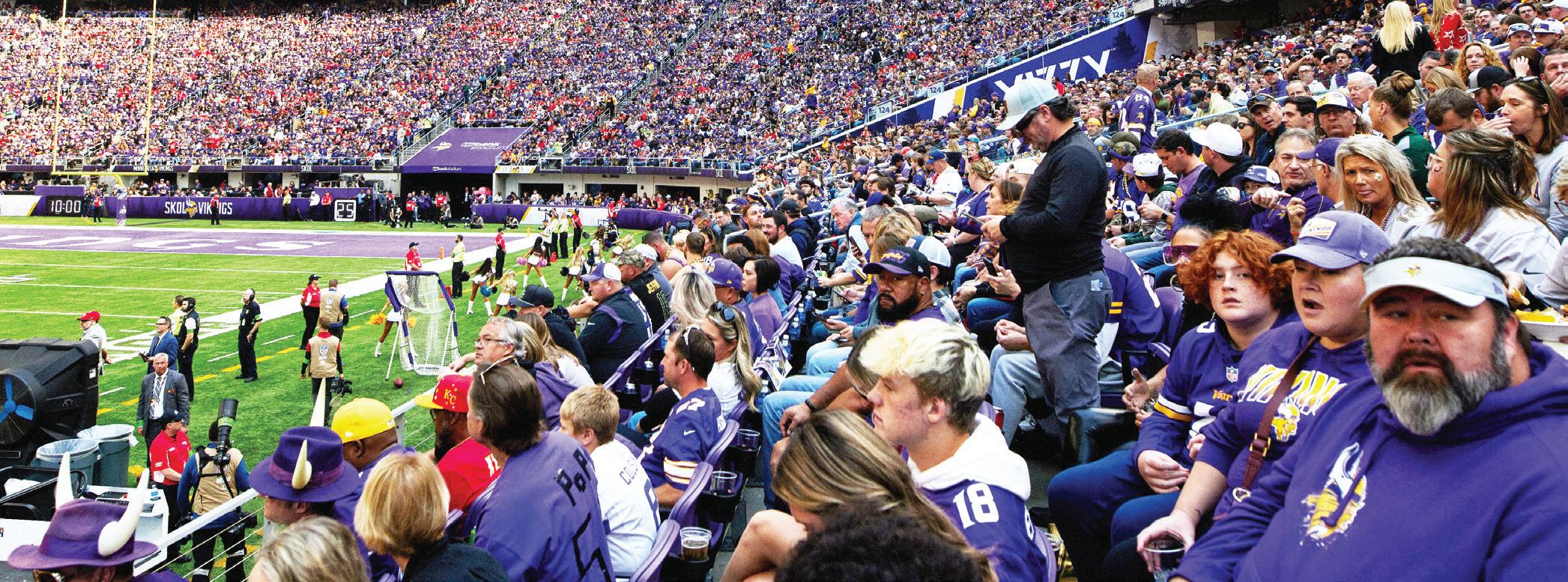

Prep football, WNBA playoffs, Big Ten volleyball
his week’s ‘Fab Five’ photos feature a player ( DeMondre Collins ) who led Richfield High School to a 32-0 prep football victory over St. Paul Johnson; a basketball player (Natisha Heideman ) who helped lead the Minnesota Lynx to 2-0 WNBA playoffs sweep of the Phoenix Mercury; a Purdue University volleyball player ( Raven Colvin ) who led her

team to a 3-2 victory over the University of Minnesota; a superstar Mercury player ( Diana Taurasi ) who
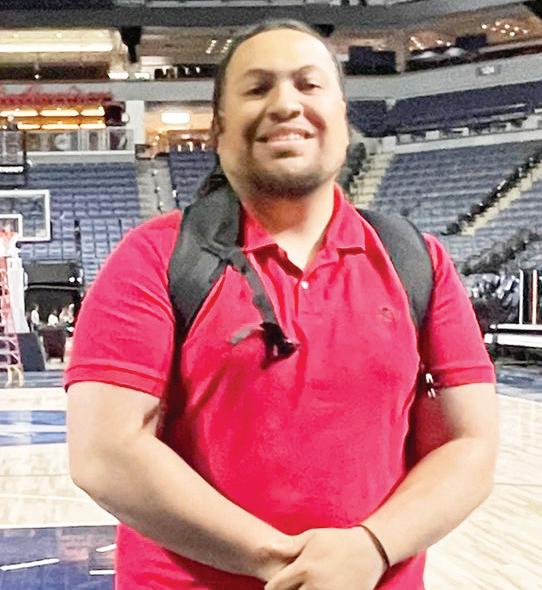
The DeBoskie couple are admittedly huge NFL fans.
They too have noticed very few fellow Blacks like themselves at pro games whether here in downtown Minneapolis or back home in Dallas.
“I guess they don’t have the means to be able to come,” surmisedTommy.
“The pricing is something that I think really, really hurts when it comes to [attending NFL games] because the middle class might not be able to get that,” added Travis Single-


might have competed in her last WNBA basketball game; and a University of Minnesota volleyball player
(
) who led the Gophers during a Big Ten Conference contest against Purdue.
Will it result in more ownership diversity?
fter several years of resisting any expansion talk, the WNBA is now expanding.
Portland is the third expansion franchise awarded by the WNBA following the Golden State Valkyries, which begin play in 2025, and a Toronto franchise to come on board the following season.
This is the second W franchise to be based in Portland—the Portland Fire existed for two seasons (2000-02) but never made the playoffs. The latest team will start play in 2026.
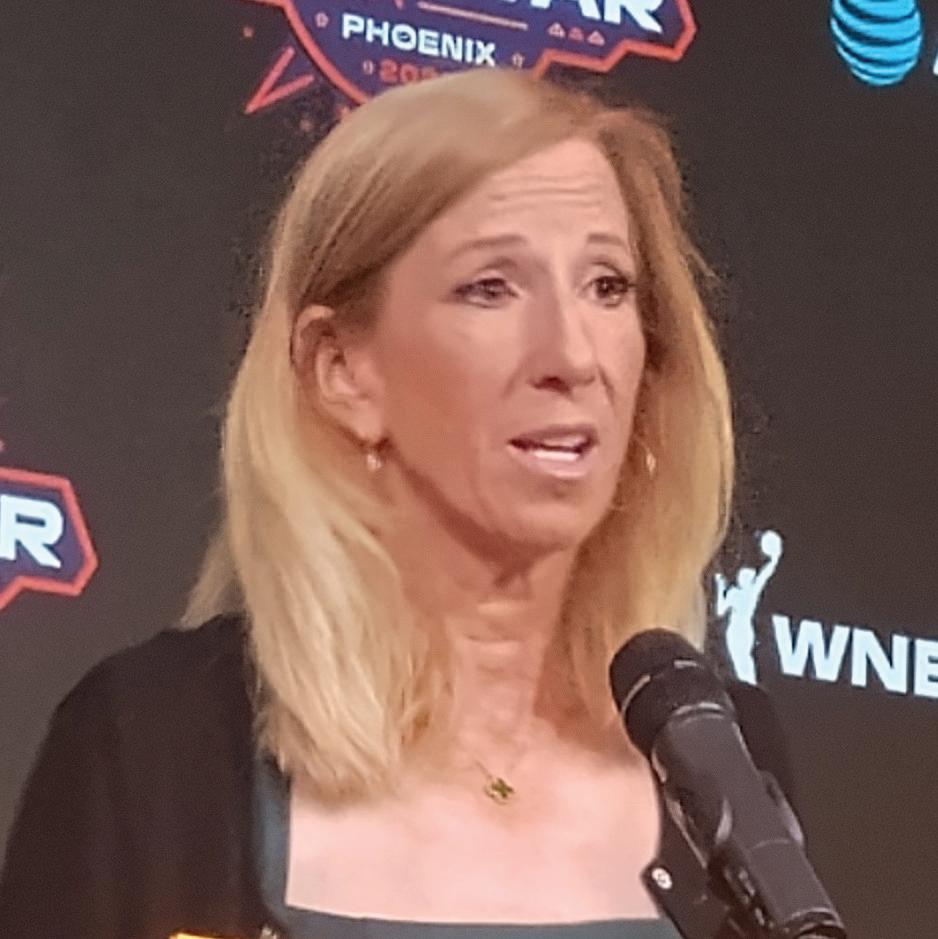
“We have a lot of demand and low supply. We want to be very thoughtful when we bring in these later teams.”
The league soon will go from 12 to 15 teams.
Before the September 16 Portland announcement, WNBA Commissioner Cathy Engelbert during a visit in Minneapolis told reporters, including the MSR, “We have a lot of demand and low supply. We want to be very thoughtful when we bring in these later two teams.”
Atlanta (2007) and Chicago (2006) are the two newest franchises that joined the WNBA, which started with eight clubs, then grew to 16 before four franchises disbanded as their then-NBA owners dropped them like bad pennies. The Orlando team was sold and moved to Connecticut.
Where will the 16th team be located?
“We don’t have a team in the middle of the country,” said Engelbert to a reporter’s question about Kansas City, a long speculated location for a new WNBA team. “We are always talking to different ownership groups,” she added.
But it should be also noted that the majority Black WNBA teams have no majority Black
■ See SOE on page 11
ton. He said he attended the Vikings-Houston contest simply because a friend gave him a ticket.
Singleton also noticed the lack of Black fans sitting around him, comparing it to Minnesota Timberwolves games. “I feel like there’s more predominantly Black people around when it comes to the Timberwolves games than the Vikings games,” he continued. “I do know that basketball resonates with African Americans a lot more than football usually does.
“I would love to see more
■ See VIEW on page 11

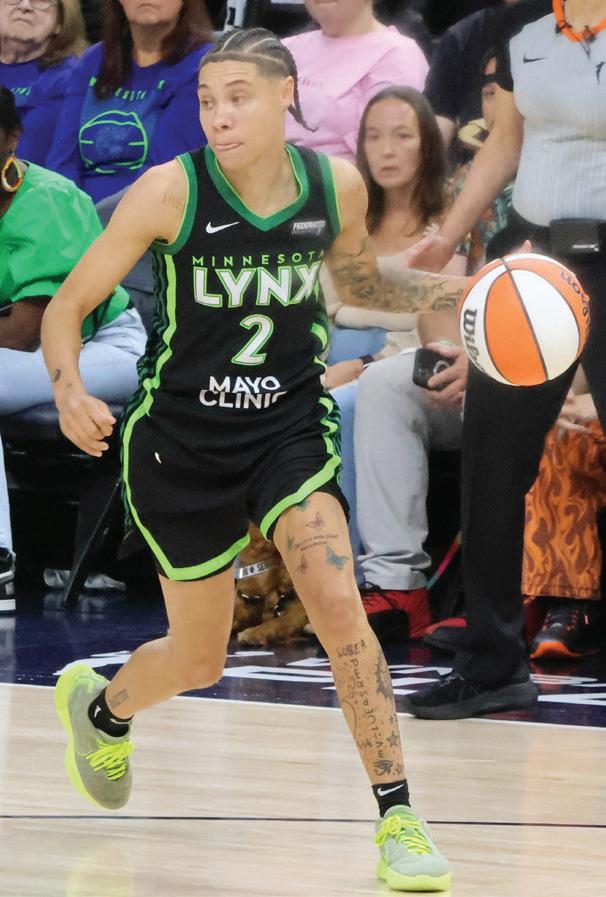
By Charles Hallman Sports Columnist
s great a receiver as Justin Jefferson is for the Minnesota Vikings, he can’t do it all alone. Both Brandon Powell and Jalen Nailor thus far this season have made some big timely catches at crucial times during games. These catches moved the chains and kept drives alive.
“[The team] might need to make a big catch, and you might get one or two catches,
■ See VIKINGS on page 11
“I just put in the work, just growing up doing the work, got to this spot and paid it off.”
